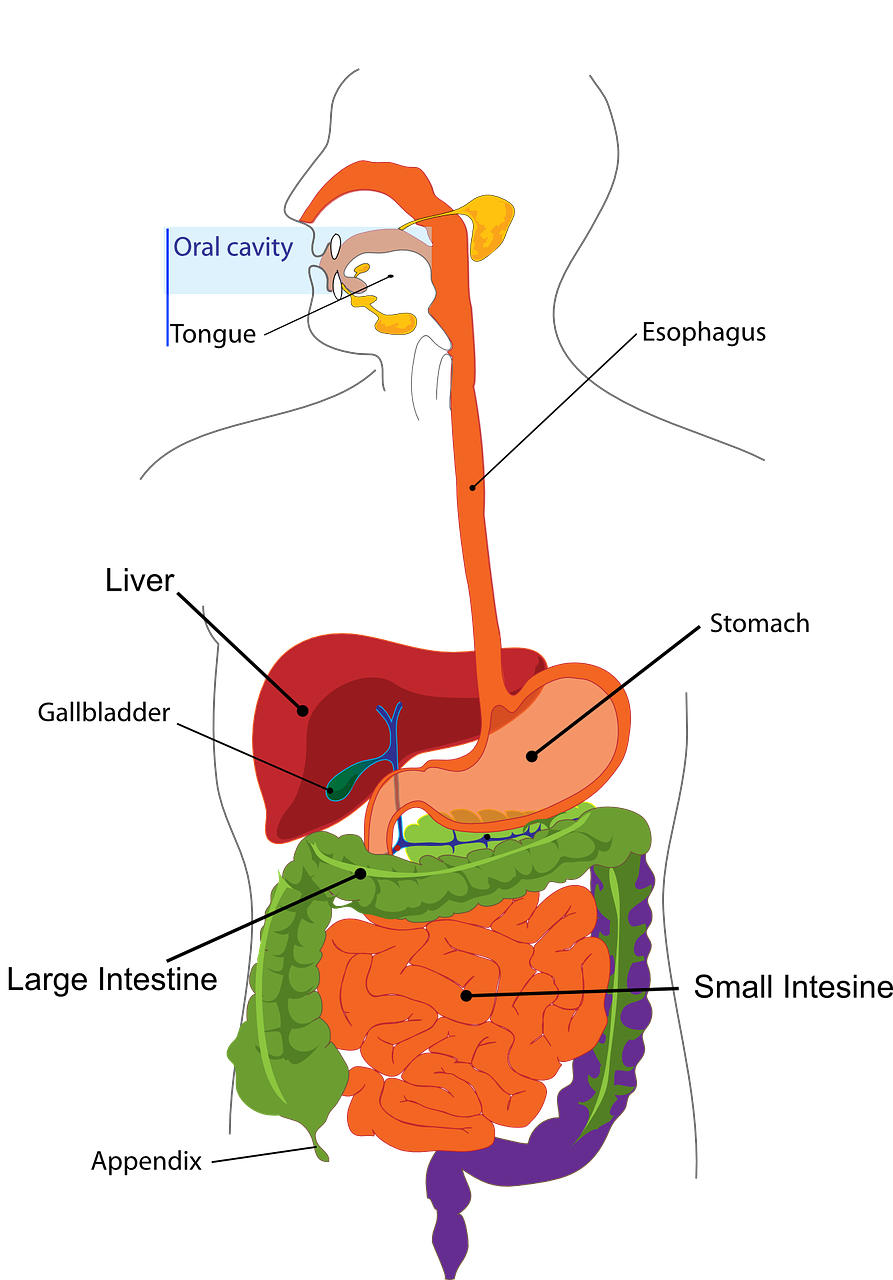In this chapter we will learn about nutrition in animals from Class 7th Science.
Nutrition In Animals
What Do We Know?
Plants prepare their own food by photosynthesis.
Animals cannot prepare their food and take food from plants directly or indirectly.
Animals have different modes of Nutrition.
Digestion
The breakdown of complex substances such as carbohydrates, proteins and fats present in food into simpler substances is called digestion.
Modes of Taking Food
Modes of taking food for different organisms are different.
For example , snakes swallow their foods, bees suck the nectar from plants and humans chew their food.
Digestion In Humans
We humans have a complex digestive system comprising of alimantary canal and digestives glands.
Alimentary Canal
The tract through which food passes from mouth to the anus is called alimentary canal.It comprises following parts:
- Buccal Cavity (Mouth)
- Oesophagus (Food Pipe)
- Stomach
- Small Intestine
- Large Intestine
- Rectum
- Anus
Digestive Glands
- Salivary Glands
- Liver
- Pancreas
The food gets digested as it passes through the digestive tract from mouth downwards and the associated digestive glands secrete various digestive juices which act on food and break it down into simpler substances throughout the process of digestion.
Let us now study about the parts of alimentary canal and the digestive glands in more detail and find out how food is digested.

Buccal Cavity
It is also known as mouth. It contains teeth, salivary glands and tongue.
Ingestion: It is the process of taking in food into the mouth.
Teeth vary in size and shape and accordingly perform differnet functions.Some of them cut the food into pieces and some grind it. Teeth are embedded in the gums and such a set of embedded teeth are called thecodont.
Tongue is a fleshy organ in the mouth.It performs the function of tasting the food and to mix it with saliva.Tongue also helps in the swallowing of food.
Salivary glands secrete saliva which digests starch and converts it into sugars.


Oesophagus (Food Pipe)
The swallowed food then passes into the stomach through pipe like structure called oesophagus or food pipe. It propels the food into the stomach.
Sometimes food passes back into the buccal cavity from stomach.This is called Regurgitation.
Stomach

It is thick-walled, U-shaped and bag like structure in upper part of our belly.
Its inner wall produces Hydrochloric acid (HCl), digestives juices and mucous. It receives food from oesophagus and opens into small intestine on the other end
HCl and Digestive juices digest the food and mucous protects its inner lining.
Hydrochloric acid digests the proteins partially and kills harmful bacteria ingested with food.
Small Intetine
Small intestine is a 7.5 m long coiled organ. It receives partially digested food from the stomach.
Secretions from liver and pancreas are also received by small intestine. Here partially digested food is digested and absorbed. The inner lining of small intestine contains finger-like very small projections called villi.The villi the nutrients contained in digested food and are transported to the cells by blood.
Liver
Liver is a reddish brown organ. It is the largest gland in our body. It secrets bile juice which is stored into a sac called gall bladder and later secreted into the small instestine.
Bile juice helps in digestion of fats and lipids.
Pancreas
Pancreas is a large organ located below the stomach and produces pancreatic juice.Pancreatic juice acts on carbohydrates and breaks them down into simple sugars. Similarly proteins get converted to amino acids and fats into fatty acids and glycerol.
Large Intestine
It is wide and 1.3 m long organ. It absorbs water and salts from the digested food and pass the remaining waste material into the rectum.
Egestion
The waste is removed from rectum through anus from time to time. This process is called Egestion.
Assimilation
As you know that inner lining of small intestine is surrounded by villi, which increase its surface area and absorb nutrients from food. Each villus has a network of blood capillaries. The absorbed food is transported into different organs of body where it is utilised. This absorption and utilisation of food by body is called assimilation.
Digestion in Rumants

The grass eating animals such as cows and buffaloes quickly eat and swallow the grass and store it in a part of the stomach called rumen. Here the food gets partially digested and is called cud . But later the cud is returned to the mouth in small lumps and the animal chews it. This process is called rumination and these animals are called ruminants.
Digestion in Amoeba (Unicellular Organisms)

Amoeba feeds on microorganisms.When it senses the food it surrounds the food paricle by its psedopodia and engulfs it.Digestive juices are secreted and food is digested.Absorbed food is used for growth and multiplication.

